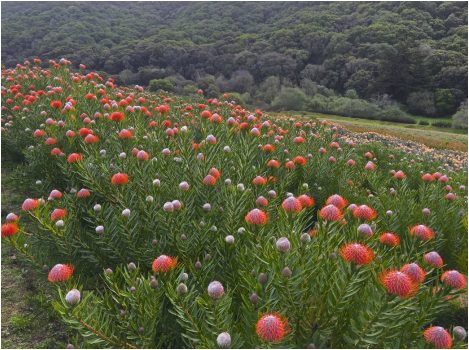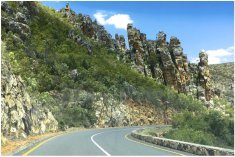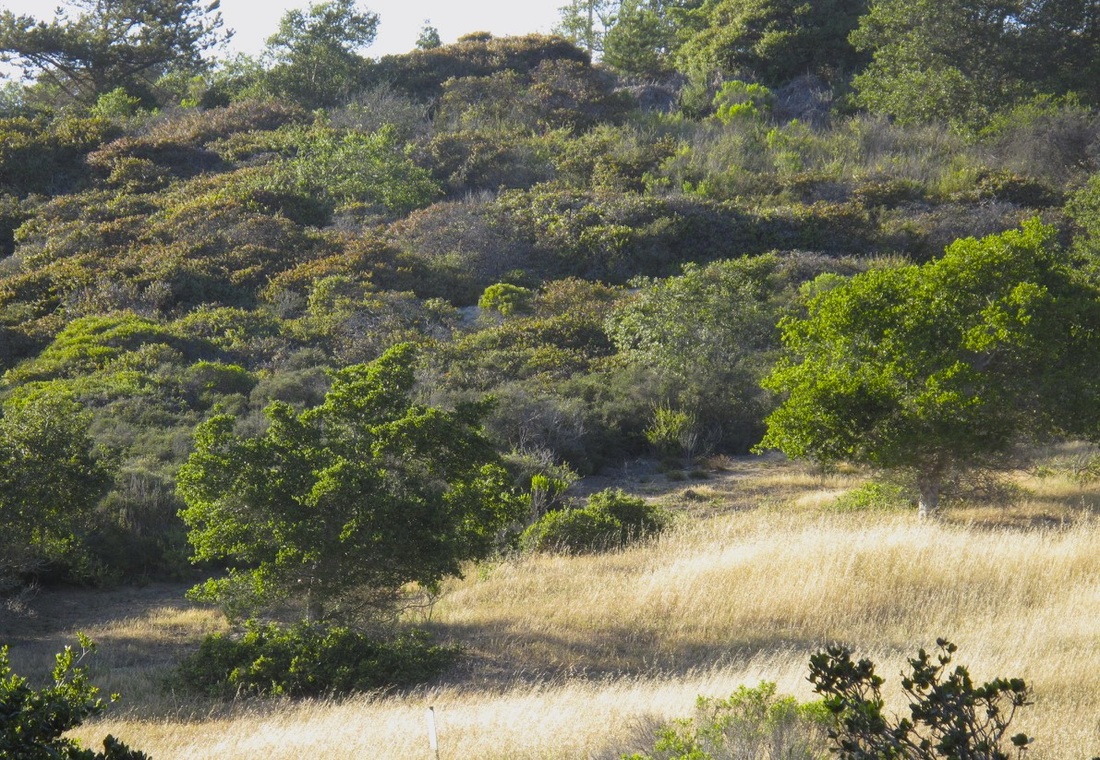|
Leucospermum "Tango" growing at Elkhorn Farm
|
Our beginningIn 1996, two cousins, born and raised in South Africa, started a 40-acre farm in California’s Central Coast to grow the stunning wildflowers they grew up with—proteacea. One of these cousins—Pierre Taljaard—already had a successful protea farm in South Africa's Western Cape Province where these flowers also make up the native vegetation adjacent to his farm. Pierre's cousin—Jan van Greunen—was a civil engineer living in San Francisco and was also interested in growing proteacea to sell as cut flowers.
In finding the correct location for their farm, they searched for farmland with just the right soil composition and acidity. Their search led to a former strawberry farm in the Elkhorn highlands near Monterey Bay. Pierre then imported plant material from South Africa to California to start the farm. |
FynbosA view of native fynbos in the Tradouw Pass, South Africa.
|
Many of the South African flowers and foliage we grow at Elkhorn Farm are part of the Cape Floristic Kingdom known in South Africa as “fynbos.” Fynbos means “fine bush” and consists mainly of members of the Proteacea and Erica (heather) families, which are generally hard-leaved shrublands and heathlands found in the coastal plains and mountains of the southwestern and southern cape of South Africa. More than 7,700 plant species are found in the fynbos biome. Much of the fynbos grow predominantly on well-leached, infertile soils. The best known representative of the protea family is South Africa’s national symbol--protea cynaroides or king protea.
Like California’s maritime chaparral, fynbos are drought-tolerant and grow in one of the earth’s five mediterranean climate ecosystems. Mediterranean ecosystems cover less than 3% of the earth’s land surface, yet contain 20% of the earth’s plant biodiversity. Due to living in a climate characterized by warm to hot, dry summers and cool, but mild, rainy winters, California maritime chaparral and fynbos share similar characteristics:
|
Our TerroirRare Pajaro Manzanita Chaparral plant community adjacent to Elkhorn Farm.
|
Elkhorn Farm is located on a hillside near the protected Elkhorn Slough tidal wetlands ecosystem and is surrounded by native oak woodlands and the rare Pajaro Manzanita Chaparral plant community habitat. Like the mediterranean climate found in South Africa's Cape Province, the climate of coastal California is well-suited to the drought-tolerant flowers, foliage and olive trees we grow. The well-drained and relatively infertile sandy soils of our hillside are also well-suited to fynbos.
Equally important is these characteristics of our flowers, foliage and olive trees, and the fact that these shrubs and trees are productive for a number of years, makes these a much better crop for our highly erodible hillside farm than a crop requiring lots of water and replacement every year or two, such as strawberries. |
Our "About" page header photo shows Leucospermum "Spider" blooming at Elkhorn Farm.


